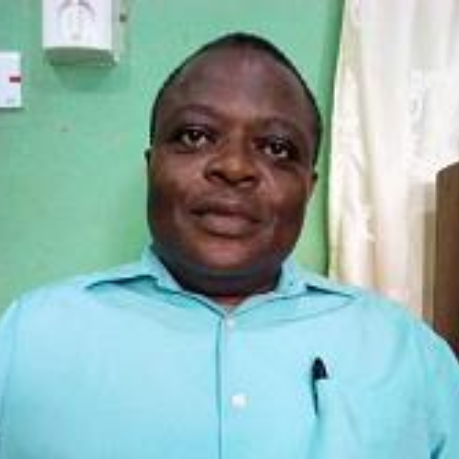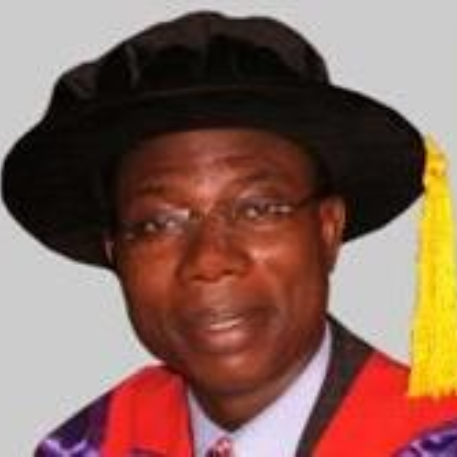International Journal of Wireless and Microwave Technologies (IJWMT)
IJWMT Vol. 9, No. 4, 8 Jul. 2019
Cover page and Table of Contents: PDF (size: 627KB)
Variation of Surface Refractivity with Soil Permittivity and Leaf Wetness in a Tropical Location
Full Text (PDF, 627KB), PP.26-38
Views: 0 Downloads: 0
Author(s)
Index Terms
Refractivity, Permittivity, Leaf wetness, Temperature and Moisture
Abstract
Radio signal transmitting above the ground surface experiences attenuation as a result of absorption by vegetation and hydrometeors, refraction due to turbulence in weather parameters; and reflection from ground surface. In this study, attempt was made to compute surface refractivity from its constituent parameters, and investigate its variation with leaf wetness and soil permittivity, at seven (7) different stations across Ondo state, Nigeria. Data for the research were obtained by in-situ measurement using Davis 3125 Vantage Pro2 weather station having sensors for measuring temperature, pressure, relative humidity, leaf wetness and soil moisture content. Measurement was carried out round the clock at 10 minutes integration time for a period of two weeks at each of the study locations, and for each of rainy and dry seasons. The soil moisture content was obtained at 30cm soil depth while leaf wetness was measured by attaching its sensor directly to a projected leaf-branch; and surface refractivity was computed from pressure, temperature and humidity data. Correlation analysis was employed to measure the strength and direction of the relationship between surface refractivity and each of soil permittivity and leaf wetness. Across the locations, R ranges from 0.38 to 0.9; and 0.04 to 0.7 for rainy and dry season respectively. The value of R is statistically significant at all the stations during the rainy season and majority of the stations during the dry season; signifying that surface refractivity exhibits good spatial and temporal relationship with soil permittivity and leaf wetness across the stations albeit with varying intensities.
Cite This Paper
Adedayo Kayode, Ashidi Ayodeji, Oni Samuel, Ajewole Moses, "Variation of Surface Refractivity with Soil Permittivity and Leaf Wetness in a Tropical Location", International Journal of Wireless and Microwave Technologies(IJWMT), Vol.9, No.4, pp. 26-38, 2019. DOI: 10.5815/ijwmt.2019.04.03
Reference
[1]Hall, H.P.M. (1979): Effects of the Troposphere on Radio Communication. Peter Peregrins Ltd, U.K.& U.S. Pp 1, 22
[2]Ogunjo, S. T., Ajewole, M. O., Adediji, A. T., & Ojo, J. S. (2014, August). Predicting radio refractivity using a stochastic model. In General Assembly and Scientific Symposium (URSI GASS), 2014 XXXIth URSI (pp. 1-4). IEEE.
[3]Adediji, A. T., & Ogunjo, S. T. (2014). Variations in non-linearity in vertical distribution of microwave radio refractivity. Prog Electromagn Res M 36: 177–183.
[4]Sarabandi, K. (1992). Scattering from dielectric structures above impedance surfaces and resistive sheets. IEEE transactions on antennas and propagation, 40(1), 67-78.
[5]Gadani, D. H., & Vyas, A. D. (2008). Measurement of complex dielectric constant of soils of Gujarat at X-and C-band microwave frequencies. 77.22. Gm.
[6]Ajayi, G.O. (1989): Physics of the Tropospheric Radio Propagation. A proceeding of the ICTP College on Theoretical and Experimental Radio Propagation Physics, Trieste, Italy, 6-24.
[7]Allen, E. W. (1975): Wave Propagation, Radiation and Absorption. NAB Engineering Handbook, 6th edition.
[8]Barringer, M. (1980): Radio Wave Propagation. NAB Engineering Handbook
[9]Ajewole, M. O., & Arogunjo, A. M. (2000). Measurement of Ground Electrical Conductivity for Planning Medium Wave Radio Broadcast Stations in South Western Nigeria. Nigeria Journal of Pure and Applied Physics, 1(1), 11-16.
[10]Owolabi I.E (1987): Tropospheric Radio wave propagation. Proc. International workshop on electromagnetic waves and applications, university of Ilorin, 1978, pp54-69.
[11]Willoughby, A. A., Aro, T. O., & Owolabi, I. E. (2002). Seasonal variations of radio refractivity gradients in Nigeria. Journal of Atmospheric and Solar-Terrestrial Physics, 64(4), 417-425.
[12]Falodun, S. E., & Ajewole, M. O. (2006). Radio refractive index in the lowest 100-m layer of the troposphere in Akure, South Western Nigeria. Journal of Atmospheric and Solar-Terrestrial Physics, 68(2), 236-243.
[13]Adediji, A. T., & Ajewole, M. O. (2008). Vertical Profile of Radio Refractivity Gradient in Akure South-West Nigeria. Progress In Electromagnetics Research, 4, 157-168.
[14]Adediji, A. T., & Ajewole, M. O. (2010). Microwave anomalous propagation (AP) measurement over akure south western Nigeria. Journal of Atmospheric and Solar-Terrestrial Physics, 72(5-6), 550-555.
[15]Adediji, A. T., Ajewole, M. O., Ojo, J. S., Ashidi, A. G., Ismail, M., & Mandeep, J. S. (2015). Influence of some meteorological factors on tropospheric radio refractivity over a tropical location in Nigeria. Mausam, 66(1), 123-128.
[16]Ojo, J. S., & Sarkar, S. K. (2008). Rainfall dynamics over two Indian tropical stations for radio communication. International Journal of Infrared and Millimeter Waves, 29(7), 649.
[17]Ojo, J. S., & Okeowo, R. C. (2008). The application of 3D rain scatter model on horizontally polarized shf signal propagation in tropical location. International Journal of Infrared and Millimeter Waves, 29(12), 1136.
[18]Mandeep, J. S., Ojo, J. S., & Emiliani, L. D. (2009). Statistics of annual and diurnal cloud attenuation over equatorial climate. IET communications, 3(4), 630-635.
[19]Ojo, J. S., Ajewole, M. O., & Emiliani, L. D. (2009). One-minute rain-rate contour maps for microwave-communication-system planning in a tropical country: Nigeria. IEEE Antennas and Propagation Magazine, 51(5).
[20]Ojo, J. S., Ajewole, M. O., & Sarkar, S. K. (2010). Statistical characterizations of rainfall structure over two tropical stations in southern India for microwave communication. Theoretical and applied climatology, 101(3-4), 363-369.
[21]Ojo, J. S., & Omotosho, T. V. (2013). Comparison of 1-min rain rate derived from TRMM satellite data and raingauge data for microwave applications in Nigeria. Journal of Atmospheric and Solar-Terrestrial Physics, 102, 17-25.
[22]Wang, J. R., & Schmugge, T. J. (1980). An empirical model for the complex dielectric permittivity of soils as a function of water content. IEEE Transactions on Geoscience and Remote Sensing, (4), 288-295.
[23]Vyas, A. D. (1982). Complex permittivity of sand & sandy loam soils at microwave frequency.
[24]Hallikainen, M. T., Ulaby, F. T., Dobson, M. C., El-Rayes, M. A., & Wu, L. K. (1985). Microwave dielectric behavior of wet soil-part 1: Empirical models and experimental observations. IEEE Transactions on Geoscience and Remote Sensing, (1), 25-34.
[25]Adedayo, K. D., Ajewole, M. O., Ogunjo, S. T. and Agboola, O. (2013). Measurement of soil Nigeria. Journal of Nigeria Association of Mathematical Physics, 23:503 – 510
[26]Vernier, D. (2007). Propagation Characteristics of Radio Waves. In National Association of Broadcasters Engineering Handbook (Tenth Edition) (pp. 95-109).
[27]Balogun, I. A., Adeyewa, D. Z., Balogun, A. A., & Morakinyo, T. E. (2011). Analysis of urban expansion and land use changes in Akure, Nigeria, using remote sensing and geographic information system (GIS) techniques. Journal of Geography and Regional Planning, 4(9), 533-541.
[28]Topp, G. C., Davis, J. L., & Annan, A. P. (1980). Electromagnetic determination of soil water content: Measurements in coaxial transmission lines. Water resources research, 16(3), 574-582.
[29]Nagelkerke, N. J (1991). A note on a general definition of the coefficient of determination. Biometrika, 78(3), 691-692
[30]Rao, C. R. (1973). Linear Statistical Inference and its Applications, 2nd ed. New York: Wiley.
[31]Asuero, A. G., Sayago, A., & Gonzalez, A. G. (2006). The correlation coefficient: An overview. Critical reviews in analytical chemistry, 36(1), 41-59.
[32]Abdi, H., & Williams, L. J. (2007). Coefficients of correlation, alienation and determination. Encyclopedia of Measurement and Statistics. Sage, Thousand Oaks, CA.
[33]Lapin L. L., 1990, Probability and statistics for modem engineering, PWS-KENT Publ Co., Boston, USA



